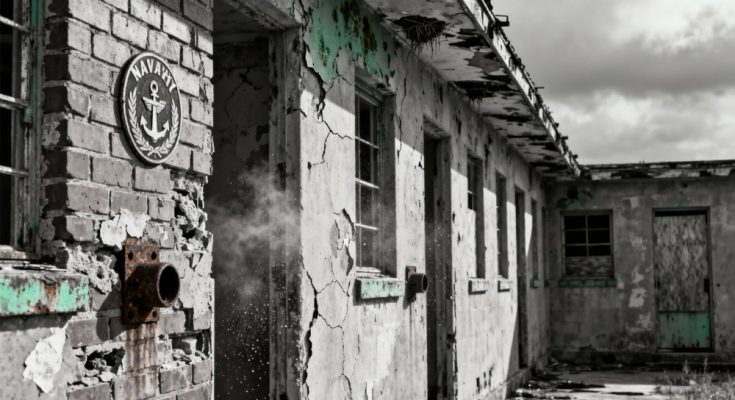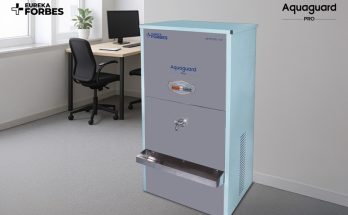Navy barracks, particularly those built or renovated before the widespread ban on asbestos, present a unique concern for mesothelioma risk. The very structures designed to house service members often contained materials that, unbeknownst to many at the time, posed a serious long-term health hazard. Understanding this connection is the first step in recognizing the potential dangers.
The Link Between Asbestos and Mesothelioma
Mesothelioma is a rare and aggressive cancer. Its development is almost exclusively linked to exposure to asbestos fibers. When these microscopic fibers are inhaled or ingested, they can become lodged in the lining of the lungs, abdomen, or heart. Over many years, typically decades, these fibers can cause inflammation and scarring, eventually leading to the cancerous growth known as mesothelioma. There is no known safe level of asbestos exposure.
Historical Use of Asbestos in Naval Construction
During the mid-20th century, asbestos was a popular building material. Its properties, such as fire resistance, insulation capabilities, and durability, made it ideal for many applications. In naval construction, this was especially true. Asbestos was incorporated into:
- Insulation for pipes, boilers, and engines.
- Fireproofing materials used throughout ships and shore facilities.
- Deck tiles, wall panels, and ceiling materials.
- Gaskets and sealants.
Given that many navy barracks were constructed or significantly updated during this era, the potential for asbestos-containing materials (ACMs) within these living and working spaces is substantial.
Exposure Pathways in Navy Barracks
Navy barracks, particularly those constructed or renovated before the widespread ban on asbestos, presented unique exposure risks for service members. The very materials used to build and maintain these living quarters often contained asbestos, a mineral once prized for its insulating and fire-resistant properties.
Asbestos-Containing Materials in Barracks
Many components within older Navy barracks were made with asbestos. This included:
- Insulation around pipes and boilers
- Ceiling and floor tiles
- Wall panels and joint compounds
- Fireproofing materials
- Even some types of paint and adhesives
These materials were common because they were effective and inexpensive. The widespread use meant that asbestos was integrated into the very fabric of naval infrastructure.
Disturbance of Materials and Airborne Fibers
The danger from asbestos doesn’t come from intact materials, but from their disturbance. When asbestos-containing materials (ACMs) are damaged, cut, drilled, or simply age and degrade, they release microscopic asbestos fibers into the air. In barracks, this disturbance could happen through various activities:
- Routine maintenance and repairs
- Renovation or demolition projects
- Accidental damage during daily life
- Even simple cleaning or wear and tear over time
These fibers are incredibly light and can remain suspended in the air for a long time. For those living and working in these barracks, breathing this air was an unavoidable risk. Navy veterans face the highest risk of developing mesothelioma, especially those involved in boiler, piping, machinery, or hull maintenance. Exposure to asbestos on military bases, particularly naval ones, is a significant cause of this aggressive cancer. Exposure to asbestos
Long-Term Inhalation Risks
Inhaling these airborne asbestos fibers is the primary pathway to developing asbestos-related diseases like mesothelioma. Once inhaled, the sharp, microscopic fibers can embed themselves in the lining of the lungs and abdomen. Over decades, these fibers can cause inflammation, scarring, and eventually, the development of cancerous tumors. The enclosed environment of barracks, combined with the potential for frequent disturbance of ACMs, meant that service members could be exposed to these dangerous fibers repeatedly over extended periods, significantly increasing their long-term risk.
Identifying Symptoms and Diagnosis
Mesothelioma, a serious disease linked to asbestos exposure, often takes a long time to show up. This delay is known as the latency period, and for mesothelioma, it can be anywhere from 10 to 50 years, sometimes even longer, after someone was first exposed to asbestos fibers. This long gap means that veterans who served in Navy barracks decades ago might only now be experiencing symptoms.
Latency Period of Mesothelioma
The time between inhaling asbestos fibers and developing mesothelioma is quite significant. This extended latency period is a hallmark of asbestos-related cancers. It’s why pinpointing the exact source of exposure can be challenging years later, especially when considering the widespread use of asbestos in naval environments during the mid-20th century.
Common Symptoms to Watch For
Because mesothelioma can mimic other, more common illnesses, its symptoms can be easily overlooked or misattributed. It’s important to be aware of potential signs, especially if you have a history of Navy service. Some common symptoms include:
- Persistent cough, sometimes with blood
- Chest pain, particularly when breathing deeply
- Unexplained weight loss
- Shortness of breath or difficulty breathing
- Fatigue and weakness
- Abdominal pain or swelling (if the cancer has spread to the abdomen)
It is critical to consult a medical professional if you experience any of these symptoms, especially in conjunction with a history of asbestos exposure.
Diagnostic Procedures and Medical Evaluation
Diagnosing mesothelioma involves a thorough medical evaluation. Doctors will typically start by discussing your medical history, including any potential asbestos exposure. This is followed by a physical examination. To confirm a diagnosis and determine the extent of the disease, several procedures may be used:
- Imaging Tests: X-rays, CT scans, and MRIs can help visualize the chest or abdominal cavity, looking for fluid buildup or abnormalities in the lining of the lungs or abdomen.
- Biopsy: This is the most definitive way to diagnose mesothelioma. A small sample of tissue is removed from the affected area and examined under a microscope by a pathologist. This can be done through various methods, including needle biopsy or surgical procedures.
- Blood Tests: While not diagnostic on their own, certain blood markers might be monitored.
Early and accurate diagnosis is key to developing an effective treatment plan and managing the condition.
Legal Recourse for Affected Veterans
Veterans who developed mesothelioma due to asbestos exposure in Navy barracks may have options for seeking compensation and benefits. The process can be complex, but understanding the available avenues is the first step toward securing the support needed.
Filing a VA Claim for Mesothelioma
Veterans diagnosed with mesothelioma may be eligible for benefits through the Department of Veterans Affairs (VA). Mesothelioma is recognized by the VA as a service-connected disability, meaning it is presumed to be related to military service if diagnosed.
To file a claim, veterans typically need to provide:
- A medical diagnosis of mesothelioma.
- Evidence of asbestos exposure during military service. This can include service records, witness statements, or documentation of duty stations where asbestos was present.
- A completed VA Form 21-526EZ, Application for Disability Compensation.
The VA generally presumes that mesothelioma in veterans is a result of their service, simplifying the burden of proof for many.
Seeking Compensation Through Legal Action
Beyond VA benefits, veterans may also pursue legal action against the manufacturers or suppliers of asbestos-containing products. Many companies knew about the dangers of asbestos but continued to use it in their products, leading to widespread exposure.
- Mesothelioma Lawsuits: These lawsuits aim to hold negligent parties accountable for the veteran’s illness and associated costs.
- Asbestos Trust Funds: Many companies that produced asbestos products have established trust funds to compensate individuals with asbestos-related diseases. These funds can provide compensation without the need for a traditional lawsuit.
- Damages: Compensation can cover medical expenses, lost wages, pain and suffering, and other related losses.
Importance of Legal Counsel Specializing in Asbestos Litigation
Given the complexities of both VA claims and personal injury lawsuits, securing legal representation from attorneys experienced in asbestos litigation and veterans’ benefits is highly recommended. These legal professionals can:
- Assist in gathering necessary evidence and documentation.
- Navigate the intricate VA claims process.
- Identify all potentially liable parties.
- Negotiate settlements or represent the veteran in court.
- Ensure all legal avenues for compensation are explored.
Preventative Measures and Future Considerations
While the focus has often been on past exposures, looking ahead is just as important when it comes to Navy barracks and mesothelioma risk. The military has made strides in addressing asbestos, but vigilance remains key. Ongoing efforts aim to protect service members and veterans from the dangers of asbestos exposure.
Ongoing Asbestos Abatement in Military Facilities
Many older Navy barracks were built using materials that contained asbestos. Recognizing the health hazards, the Department of Defense has been working to identify and remove these materials. This process, known as abatement, involves carefully taking out asbestos-containing items and disposing of them safely. It’s a complex and lengthy undertaking, especially in facilities that have been in use for decades. The goal is to create safer living and working environments for everyone. This work is guided by professional standards, like those found in occupational and environmental medicine resources.
Health Monitoring for Former Service Members
Even with abatement efforts, veterans who served in older barracks may still be at risk due to past exposure. Regular health check-ups are recommended for anyone who believes they may have been exposed to asbestos. Doctors can monitor for early signs of asbestos-related diseases, including mesothelioma. Early detection can lead to better treatment outcomes. It’s important to discuss your service history with your healthcare provider.
Raising Awareness About Navy Barracks Mesothelioma Risk
Continued awareness campaigns are vital. Educating current and former service members about the potential risks associated with asbestos in military housing is a priority. This includes informing them about:
- The types of materials that commonly contained asbestos.
- The symptoms of mesothelioma and other asbestos-related illnesses.
- Where to seek help and information regarding claims and medical care.
By keeping this issue in the public eye, we can help ensure that those affected receive the support and recognition they deserve.
Resource Library




